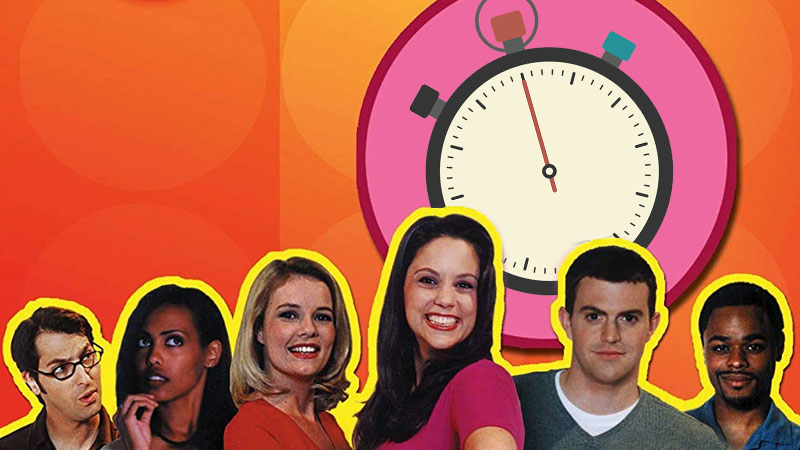226 media results found for 'math'
Provides a general overview on various aspects of money. Segment 1, What Is It Worth?: Discusses how worth is determined. Looks at auctions, coin collecting, and historic forms of currency. Segment 2, It's As Good As Gold: Looks at why gold has be...Read More

In this episode, students will learn how to identify the main characters in a story and recognize numbers through subitizing. Dr. Sanders will read the book "Rona, Rona GO AWAY!" by Adrienne Draper. Part of the "Teaching in Room 9" series.
Sam and Amber play a game in which they must identify the next correct number in the sequence: 2, 5, 9, and 14. After some analysis and reasoning, they see that the pattern between the numbers makes the correct answer 20. Part of the "Star Maths" ...Read More
Sam and Amber must give Uncle Zak the exact measurement of cable needed to repair an electrical power loss. They try to solve the math problems in their heads, but Numberella shows them how to solve the problems with a number line. Part of the "St...Read More
Amber accidentally releases several hundred bee-like insects from their hives. To get the same number back into each hive, she must add three-digit numbers in her head. Numberella shows her how by splitting numbers into hundreds, tens, and ones. P...Read More
Sam and Amber are having a contest between their two teams of robots. Each side claims victory, but who has actually won? Numberella shows them how a 100-square grid can help them subtract in their heads to work out the differences in total scores...Read More
Uncle Zak asks Sam and Amber to load the spaceship with boxes. Each box must weigh the same; however, every unit that goes into the boxes is a different weight. They add the weights in their heads, and Numberella shows them how a 100-square grid c...Read More
Sam and Amber accidentally set off the launch computer on an abandoned ship. The code to stop it is solved by creating 3-D shapes from 2-D images. Cuboids and cylinders are a challenge, but with Numberella's help, the kids create them just in time...Read More
Sam and Amber know 2-D shapes such as squares, circles, and triangles, but they are not sure how to help when Uncle Zak asks them to sort the 3-D shapes. Numberella steps in and describes cubes, cylinders, cones, and other shapes. Part of the "Sta...Read More
When Sam and Amber get stuck on a clue in their treasure hunt game, Numberella helps them see it as a two-part operation. They also learn to breakdown their reasoning into steps, to check their decisions, and to recognize problems with more than t...Read More
Sam and Amber find an old dartboard and begin playing. A player must reach 20 in order to win. To do this, they must learn the difference between addition and subtraction and the different combinations that equal 20. Part of "Star Maths" series.
Pete and Pauly are brothers, and they both have pet iguanas. They get into an argument about whose iguana is the biggest. Pete believes his is bigger and has grown more than Pauly's. How will they determine who is right? Part of the "Math Mess" se...Read More
Gina Gilmore, a first grade teacher at the Florida School for the Deaf and the Blind, shares the strategy math think-alouds. This strategy provides students with the skills to solve math problems and explain how they arrived at their answer. Part ...Read More

In this segment, the Standard Deviants introduce students to the properties of angles, polygons, and circles. Topics covered include angles, triangles, polygons, circles, and volume. Part of the "Fundamental Math" series.
The Standard Deviants prepare students to tackle fractions and decimals. Topics covered include parts of a whole, converting fractions and decimals, equivalent fractions, common denominators, adding and subtracting fractions, and working with deci...Read More
The Standard Deviants review the basics of multiplication and division as they guide students through problems involving factoring, exponential notation, and multiple-digit problems. Students also learn how to make sense of order of operations, sq...Read More

An introduction to sign vocabulary that is specific to math. Many interpreters, teachers, and students are unfamiliar with specialized sign vocabulary because the concepts occur infrequently in daily communication. In this video a Deaf professiona...Read More
The Standard Deviants, a group of young performers, present a humorous, detailed guide to improving the math score on the SAT.

Let's dive into what being a good neighbor is and learn about awesome character traits. This episode also teaches learners how to have fun counting from one to ten. Part of the "Teaching in Room 9" series.
Sam and Amber get trapped in a chamber, and the only escape is to know which doors open at preset times. With Numberella's help, they learn the difference between "PM" and "AM." They also learn time while using a 24-hour digital clock. Part of the...Read More
Gives suggestions for solving probability, quantitative comparison, and angle/triangle problems in the math portion of the SAT. Covers "both or neither" probability questions, what to do with the "ugly" problems, and how to eliminate some of the ...Read More
Focuses on the geometry portion of the SAT. Reviews formulas and tips for solving problems about perimeter and area, parallel lines and angles, circles, volume, coordinates and slopes, and quantitative comparison. Ends with suggestions of ways t...Read More
Covers critical algebraic concepts, including algebraic functions, properties of numbers, exponents, polynomials, working with equalities and inequalities, linear equations, quadratic equations, graphs, and algebraic geometry. Accessibility option...Read More
In this 12-part series, Zero the Math Hero describes how to identify the correct parts of the figures so students will be able to substitute them into the formulas. The Pythagorean Theorem is also used in the process of finding volumes. Students w...Read More
In this 12-part series, Zero the Math Hero describes how to identify the correct parts of the figures so students will be able to substitute them into formulas. The Pythagorean Theorem is also used in the process of finding lateral and surface are...Read More
In this 12-part series, students will use coordinates on a number line to find segment lengths along with the proper use of a protractor to measure angles. They will use problem solving to find missing segment lengths and angle measures. Problems ...Read More

This episode is a captivating blend of school readiness, story time, science, and math that ignites young minds' curiosity. Segments include poems that promote self-affirmation and how to identify living and nonliving things. Part of the "Teaching...Read More

What's the golden ratio? Some say it’s the most mythical number in the universe. Others say it underlies everything from nature’s patterns to beauty in art and design. Does the myth of the golden ratio hold up to its mathematical reality? Part of ...Read More


























